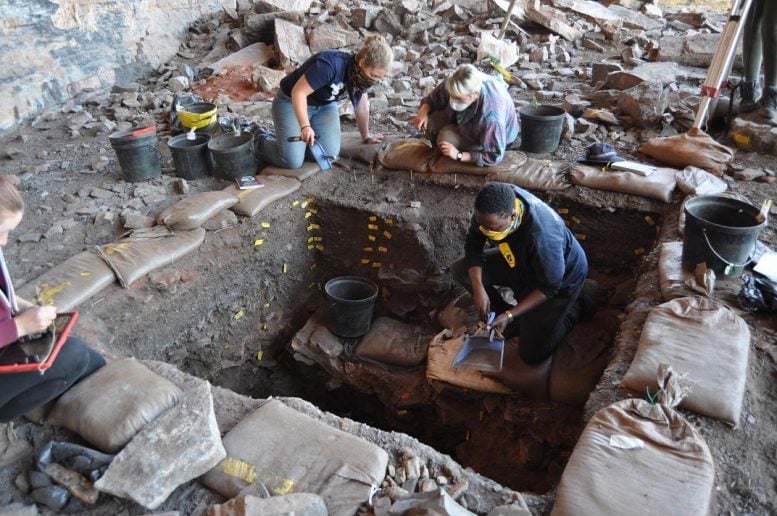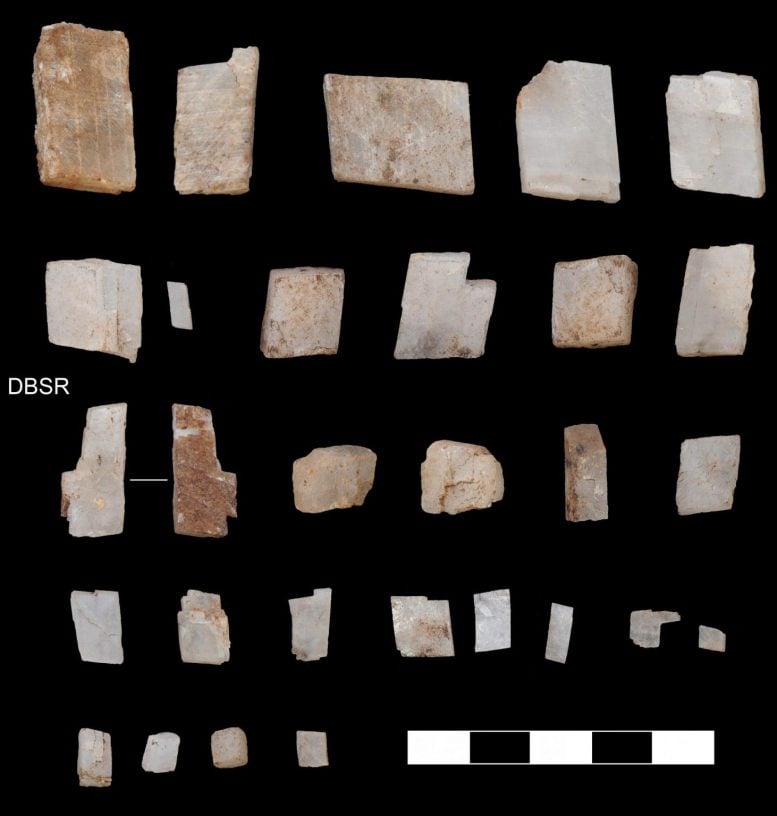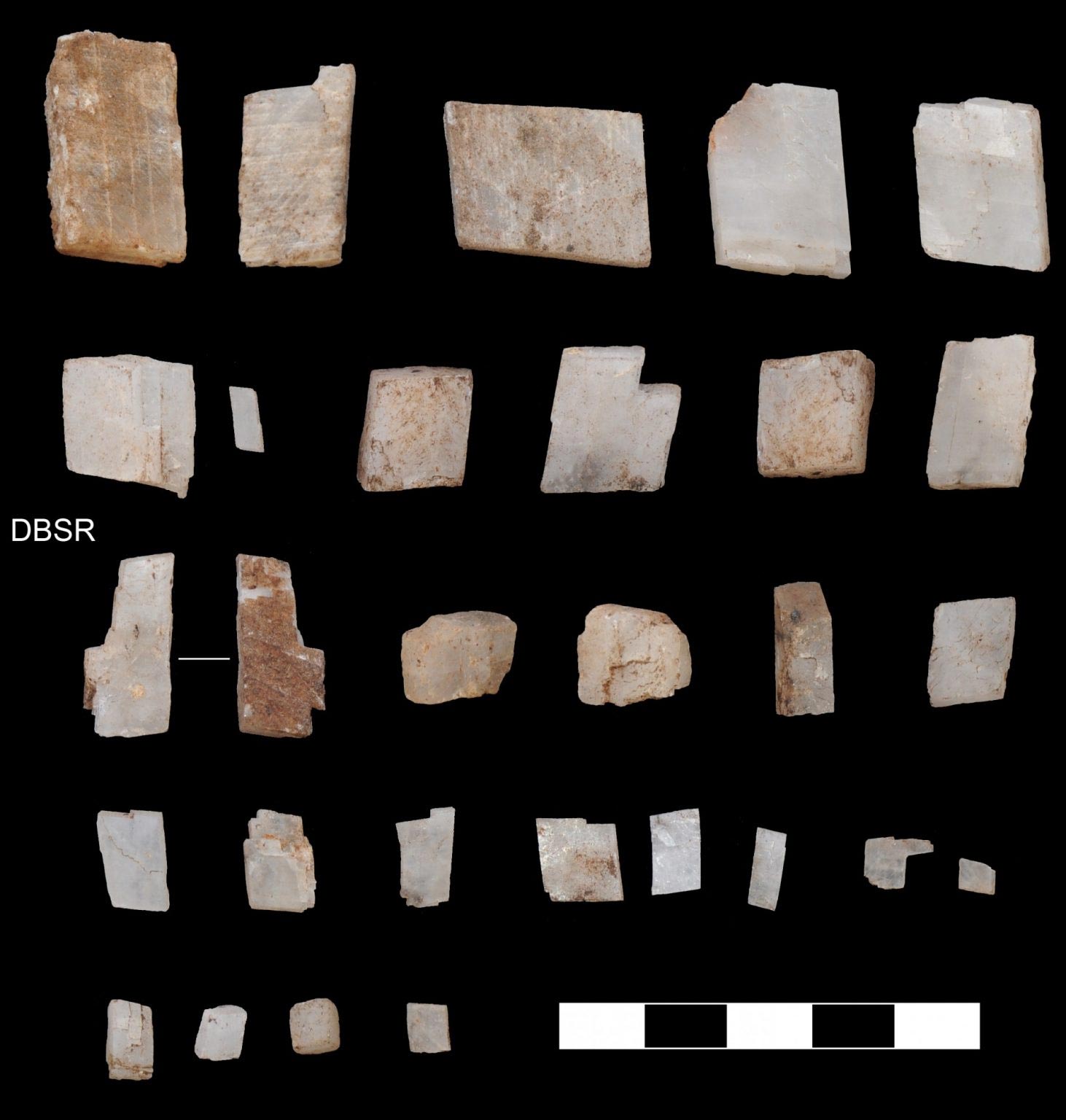Archaeological site in a rock sanctuary in the Kalahari Desert, South Africa: More than 100,000 years ago, people used what is called the Ga-Mohana Hill North Rock Shelters for spiritual activities. Credit: Jane Wilkins
–
Archaeological evidence in a rock sanctuary on the edge of the Kalahari Desert in South Africa challenges the notion that the origin of our species is related to the coastal environment.
“Our findings from this rocky sanctuary suggest that our over-simplified model of the origin of our species is no longer acceptable. The evidence shows that many regions across the African continent have been involved, and the Kalahari is only one, ”said Dr. Wilkins.
“Archaeological evidence for early Homo sapiens has been found mostly at coastal sites in South Africa, supporting the idea that our origins are related to the coastal environment. There are few well-preserved and historic archaeological sites in the interior of South Africa that can do this. tells about the origin of Homo sapiens which is far from the coast.
“One such site is a rock sanctuary on the Ga-Mohana Hill which stands over the vast Kalahari savanna.”

Archaeological excavations at Ga-Mohana Hill North Rockshelter where early evidence of the behavior of the Homo sapiens complex was found. Credit: Jane Wilkins
–
Used as a place of spiritual activity today by some local people, archaeological research in the rocks has revealed a long history as a place of spiritual significance.
The researchers unearthed 22 crystals of white calcite crystals and ostrich eggshell shards, which are believed to be used as water containers, from sediment dating back 105,000 years at Ga-Mohana Hill North Rockshelter when the environment was much wetter than it is today. The researchers were delighted to find that the collection of human-collected crystals and ostrich eggshell shards at Ga-Mohana Hill was much older than those reported in indoor environments elsewhere.
“Our analysis shows that the crystals are not introduced into the sediment through natural processes, but are deliberately collected as objects that may be associated with spiritual beliefs and rituals,” said Dr. Wilkins.
“Crystals refer to the spiritual or cultural uses of a dwelling from 105,000 years ago,” said Dr. Sishaba Mabe from the University of the Witwatersrand. “This is good considering the continued use of this site for ritual activities today.”
The age of the archaeological layers is limited by Optically Stimulated Dating (OSL) at the OSL Laboratory at the Geology Department of the University of Innsbruck, Austria.
“This technology measures the natural light signals that accumulate over time in the quartz grains and sedimentary feldspars,” said Dr. Michael Mayer, head of OSL. “You can think of each grain as a miniature clock, in which we can read this signal of natural light or luster, which gives us the age of the layers of archaeological deposits.”


The crystals were collected by Homo sapiens in the early southern Kalahari 105,000 years ago. Credit: Jane Wilkins
–
The name Kalahari comes from the Tswana word Kgala, which means “very thirsty”. Today, Ga-Mohana’s climate is semi-arid, with little or no monsoons. However, ancient evidence of the abundance of water above this landscape is evident from the abundant tuff formations around the shelter. Using the uranium-thorium dating method, their ages range from 110,000 and 100,000 years ago – the same time period as the people who lived there.
“This is the story of water in what we now know as arid landscapes, about adaptive people exploiting the landscape not only to survive but to thrive” (HERI) at the University of Cape Town, said Dr. Robin Pickering, Director of the Human Evolution Research Institute.
Due to the continued spiritual meaning of Ga-Mohana Hill, researchers are aware of the reduced impact on local community use of rock shelters after each season.
“Leaving no visible impact and working with local communities is very important for the sustainability of the project,” said Dr. Wilkins. “So that Ga-Mohana Hill can continue to provide new insights into the origin and evolution of Homo sapiens in the Kalahari.”
Reference: “Innovative behavior of Homo sapiens 105,000 years ago in the wetter Kalahari” by Jane Wilkins, Benjamin J. Scoville, Robin Pickering, Luke Giljanick, Benjamin Collins, Kyle S. Brown, Jessica von der Meden, Wendy Komalo, Michael C . Mayer, Sechaba Maape, Alexander F. Blackwood and Amy Hatton, March 31, 2021, Temperate nature.
DOI: 10.1038 / s41586-021-03419-0
–


